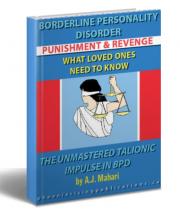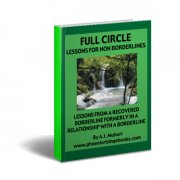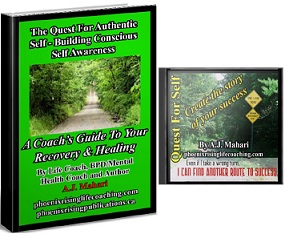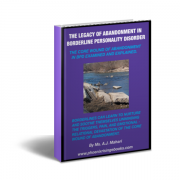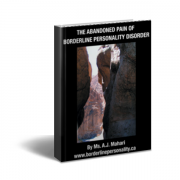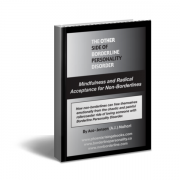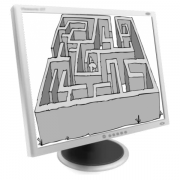![]()
Borderline Personality Disorder
"The defining criteria of Borderline Personality Disorder (BPD) is: a pervasive pattern of instability of interpersonal relationships, self-image, and affects, and marked impulsivity that begins by early adulthood and is present in a variety of contexts, "as indicated by five (or more) of the following:
- frantic efforts to avoid real or imagined abandonment
- a pattern of unstable and intense interpersonal
relationships characterized by
- alternating between extremes of idealization and devaluation
- identity disturbance: markedly and persistently unstable
self-image or sense of self; or sense of long-term goals;
or career choices, types of friends desired or values
preferred
- impulsivity in at least two areas that are potentially
self-damaging: for example; spending, sex, substance abuse,
and binge eating.
- recurrent suicidal behavior, gestures, or threats, or
self-mutilating behavior affective instability: marked
shifts from baseline mood to depression, irritability, or
anxiety, usually lasting a few hours and only
rarely more than a few days
- chronic feelings of emptiness
- inappropriate, intense anger or difficulty controlling
anger; frequent displays of temper
- transient, stress-related paranoid ideation or severe
dissociative symptoms.
It should be noted that many of the traits associated as being BPD traits are commonly found in the general population as well. The line is drawn between the average and the Borderline Personality Disorder person by the number of characteristics listed above that effect them along with the severity or intensity of that affect.
In Borderline Personality Disorder, like DID (MPD), there is a likelihood of a trauma history: "Physical and sexual abuse, neglect, hostile conflict, and early parental loss or separation are more common in the childhood histories of those with Borderline Personality Disorder."
Borderline Personality Disorder Expounded Upon
Borderline Personality Disorder is a very extensive and pervasive disorder in the lives of those who have it and the lives of those who care and or love them and in the lives of those who treat them.
I do feel, however, as a healing borderline, that borderline individuals are often looked at in as black and white a way by significant others and clinicians as is true of the view of the borderline toward them. Living with the pain and the cognitive distortions of borderline personality disorder, (BPD) does not have to be a life sentence. I have found through my own experience that growth, change and healing are very possible. They come with a high price though. One must be dedicated to this process in order to successfully journey through it. It is not a short or simple process but it is one that is frought with much pain. I have often wondered and tried, though not too successfully, really, to compare what has been the most painful aspects of BPD for me:
1-Having it,
2-Living with it, or
3)Healing from it.
It is somewhat of a toss up really in that there is pain involved with all three aspects of experience.
I do firmly believe though that no matter how much pain one has to work through, endure and learn how to hold in healing, living with BPD, is by far much more painful when there is not active work and treatment to change, grow, heal and manage one's symptoms.
BPD, no doubt needs to be better defined than it currently is. I also am very concerned that many clinicians do not think it is necessary or that it would be beneficial to tell their clients or patients that they, in fact, have been diagnosed with BPD. I know in my case, finding out the diagnosis was the beginning of a long process of slow learning about just what it meant and involved. It was this educational process, both on my own, and in therapy, that helped to me to, piece by piece, come to terms with what BPD is, what it means to me and for me in my life, its legacy in my life, and what was required in order for me to change my life.
I have experienced borderline personality disorder to be a nightmare riddled with pain and angst. For 35 years it controlled my life. In the last 11 years I have been taking that control back and reclaiming myself, the self that was lost to and through so much as a child. I have gradually been able to take the walls down and to among other things, learn that boundaries, while essential, do not have to be brick walls. I have also learned that I do not have to control or manipulate those around me, or the environment around me in order to feel and be safe. I have learned that I am indeed an adult and not a child. I have brought my emotional maturation process along which has enabled me to learn the many key concepts that are neccessary to take one's life back from this very profound, pervasive and prolific personality disorder.
Borderline Personality Disorder does not have to be a life sentence!
© Ms. A.J. Mahari - February 24, 1999
Primary Etiology of BPD
Variety of Factors Examined




